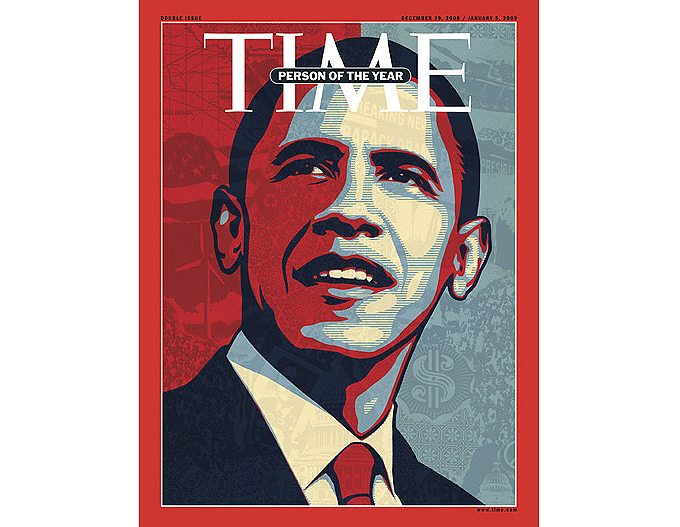Howard Chua-Eoan goes to Alphabet City to drink Sprezzatura Royales and reminisce about TIME’s Person of the Year.
Cocktails & Carnage is a weekly interview column from former TIME News Director Howard Chua-Eoan. Every Thursday! Read previous columns here.
I admit there is something melancholy about two retirees standing outside a bar waiting for it to open at six in the evening. But Arthur Hochstein and I were happy to be the first into Pouring Ribbons, the cocktail lounge that looks out over Avenue B from the second-floor of a squat and homely building notable only for the enormous yellow awning that proclaims that the establishment on ground level sells “Wine & Liquors.” The good stuff, we knew, was upstairs.
Friends had warned us that the lines were long and the place could be packed. But we wanted to kill some time before heading out for another event and, besides, it was midweek. So we thought we’d give it a try. I had worked with Arthur at TIME magazine for most of my career, even before he became its Art Director from 1994 to 2009. It was a tumultuous period full of wars, terror attacks, and a dead princess. We had spent endless hours together at the office; but we’d never really gone out to a non-business dinner before. So we decided to fix that and start out at Pouring Ribbons for a drink.
It turned out that there were only three people on line when the bouncer got word on his earpiece that guests could ascend. The place was bright. And empty. Arthur ordered a classic martini, but I decided to branch out a little. Alchemy Consulting, which is, according to their website, “focused on increasing the profitability of bars and restaurants through innovative beverage design”, runs Pouring Ribbons. I knew them for the Double Punch, a luscious pisco-laced, cold-filtered coffee cocktail they created for The Randolph on Broome (I had written about the drink during my brief stint as mixology correspondent for TIME). Picking through the noir-ish names on the menu (Connie Corleone, Goon Squad, Pretty Strangers and Duck & Cover), I chose the one that promised less mayhem and more bravura, the Sprezzatura Royale—sparkling Lambrusco combined with Pierre Ferrand Cognac, Amaro Nonino 14 plus lemon and honey syrup.
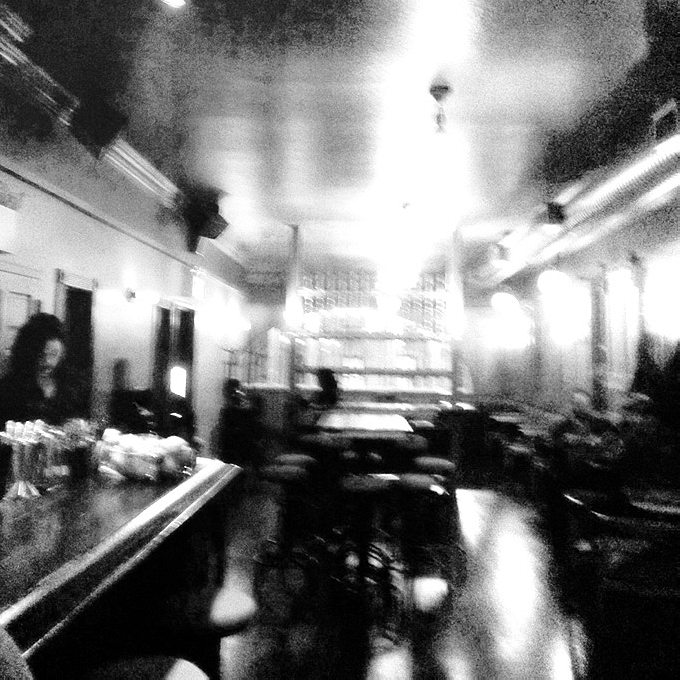
Drinks in hand, it was impossible not to talk about the old shop—especially at a time when the magazine was deep in secrecy over the choice of Person of the Year. I asked Arthur for his favorite POY (as the issue is known internally) covers and, after a great struggle, he brought it down to six (see his picks below).
TIME staffers could well be in the doghouse for snooping too much
As for this year’s choice of the Person of the Year, nothing much has changed about the process: the staff is still mostly in the dark about who it is, the secret always in the often-indecisive heart of the managing editor of TIME. And woe to the overly curious. If a staffer not assigned to the project should figure out the truth, he or she could well be in the doghouse for snooping too much. That happened to me back in 1986 when I figured out from the activity of certain colleagues that the choice was Corazon Aquino. I should have kept quiet but I volunteered to help, proud that the first individual woman to get the nod since 1952 was from the Philippines, where I was born. That didn’t go well with the people in charge of the secrecy. They accepted my help but coldly.
But even those who say they know the choice might be wrong in the end. The year 1985 was when Mikhail Gorbachev became the leader of the Soviet Union and was shaking things up with reform. And so, it was almost a no-brainer that he would be Man of the Year (yes, it was always “Man of the Year” until 1999, with the exception of four “Women of the Year”, including Queen Elizabeth and Madame Chiang Kai-Shek). I was part of the team that put together the almost-complete package of stories on Gorbachev for the issue when TIME Inc.’s Editor-in-Chief Henry Grunwald walked in to see how things were progressing. Grunwald was the boss of all bosses at the magazine company: each publication was run by a managing editor who answered to him. He had also just come back from China, which was in the sixth year of its own reforms, initiated by Deng Xiaoping (who had been Man of the Year at the end of 1978). Despite the near completion of the Gorbachev project, Grunwald declared that he was so impressed by the changes in China that he ordered TIME’s managing editor to make Deng the Man of the Year again. We scrapped everything and, within a week, had the Chinese leader on the cover with a memorable <a href=”http://content.time.com/time/covers/0,16641,19860106,00.html” target=”_blank”>collage portrait by Robert Rauschenberg</a>. We celebrated by taking the entire Person of the Year staff out to what was then the fanciest Chinese restaurant in midtown Manhattan. Gorbachev would have to wait till the end of 1989 to become Man of the Decade.
One of the basic rules was the Person of the Year had to be alive. No room for argument there
Sometimes the obvious choice didn’t make the cut at all. The biggest newsmaker of 1997 was Princess Diana, whose death had been an enormous global phenomenon. The most famous woman in the world was suddenly gone in a senseless auto smashup in Paris after being chased by paparazzi. As the editor of the issue that came out with the news of her death that August weekend, I was prepared to make the argument for Diana to the Editor-in-Chief, Norman Pearlstine. But before I could say anything, I was reminded that one of the basic rules was the Person of the Year had to be alive. No room for argument there. The Person of the Year would become Andrew Grove, the CEO of Intel.
Divine intervention did come into play once, sort of. In 1994, there was a concentrated push to make Newt Gingrich Man of the Year. All the while, however, we had been chugging along on Pope John Paul II, who had always been a contender since ascending to the Throne of St. Peter in 1978 but had never been the magazine’s final choice. This time, he seemed to be on the verge. Somewhere along the line, the decision was made to switch to Gingrich. But before anything could be done, word came back from the correspondents reporting on John Paul that they had managed to get into a small semi-private audience with the Pontiff and, against all rules, told him that he was Man of the Year. The idea that TIME would be caught in a lie to the Pope proved to be too damning a concept for the editors to overcome—and Gingrich would have to wait till the next year to become Person of the Year.
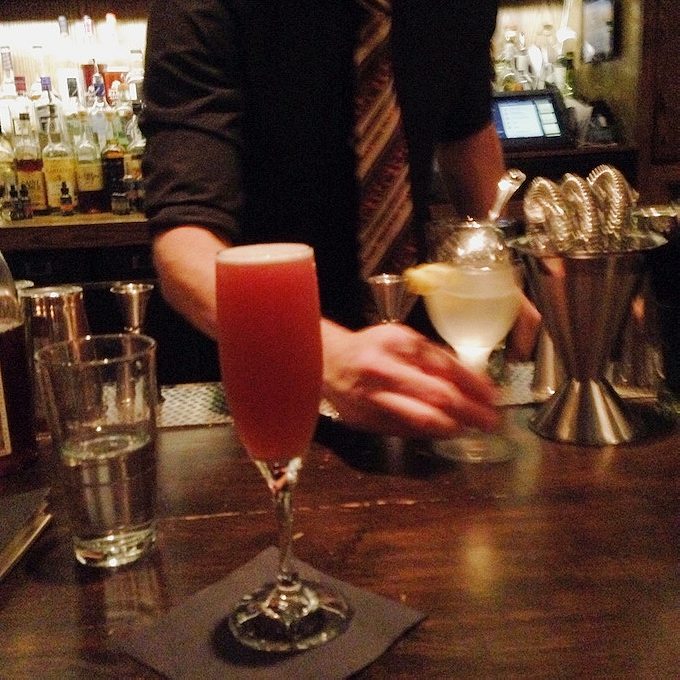
Over our drinks, Arthur and I laughed at other adventures and misadventures of Person of the Year. He remembers shopping for the right kind of mylar for the 2006 choice. The synthetic material would reflect “You”—the stand-in for the rise of social media. That choice was savaged in certain quarters, in part because in some editions, the mylar wasn’t good enough to make clear who or what was being reflected. But the prescience of the concept is still impressive: after all, it turned the magazine cover into a selfie, seven years before that became Oxford Dictionary’s word of the year for 2013.
Whoever becomes this year’s choice is bound to raise debate and controversy. It always does. We’ll all know by Dec. 11. In the meantime, I’m making my way back to Pouring Ribbons for another Sprezzatura Royale.
Former TIME Art Director Arthur Hochstein’s top six TIME Person of the Year covers:

Winston Churchill, January 2, 1950 (Man of the Half-Century): “classic TIME portraiture by Ernest Hamlin Baker, one of the three prolific master [painters] who worked for the magazine. The other two being Boris Chaliapin and Boris Artzybasheff.”
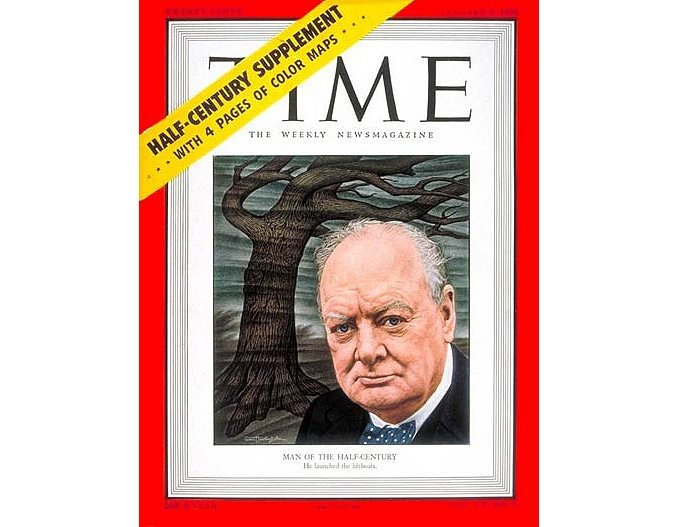

Charles DeGaulle, Jan. 5, 1959, by Bernard Buffet: exemplified “TIME’s tradition of tapping into the fine art world.”
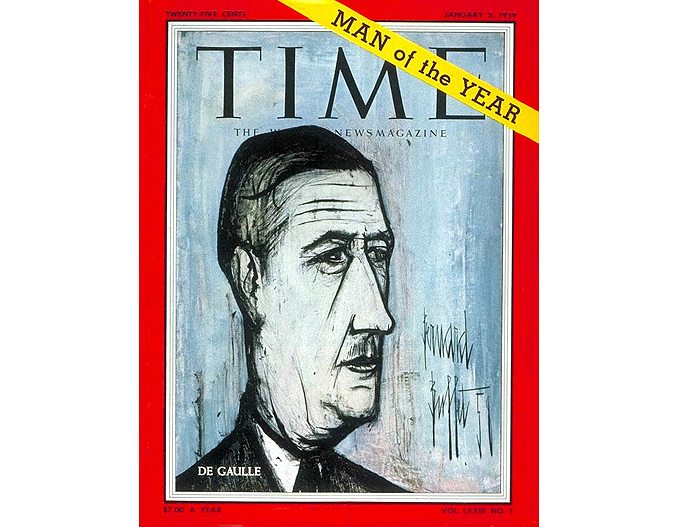

Martin Luther King Jr., Jan. 3, 1964: The egg-tempera image by Robert Vickrey for the Jan. 3, 1964 issue is “majestic and moving.”


Ayatullah Khomeini, Jan. 7, 1980 by Brad Holland: “dark brooding and powerful” it was a reminder to Americans that the choice was for the person who “for better or worse” influenced the events of the year. It set the record for the most cancelled subscriptions.
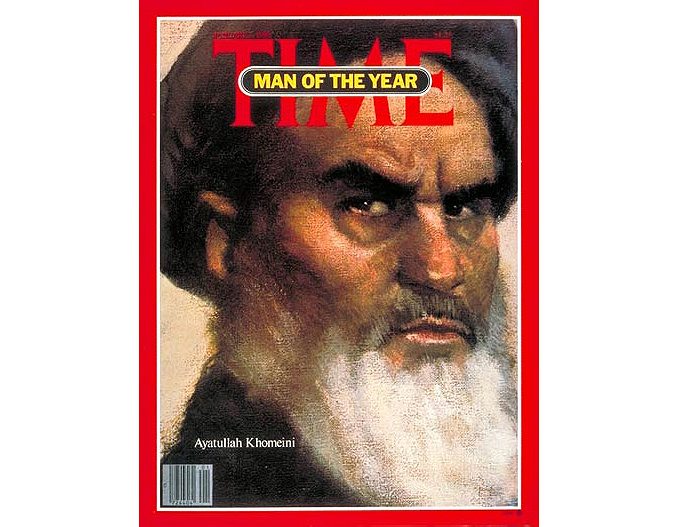

Rudy Giuliani, 12.31.01 by Gregory Heisler: Arthur loved the image when the magazine surprised readers for its 2001 choice—when most people were fearful that Osama bin Laden would be picked because of the 9/11 attacks. “The picture of Giuliani towering over his city captured the symbolism and zeitgeist of the moment.”
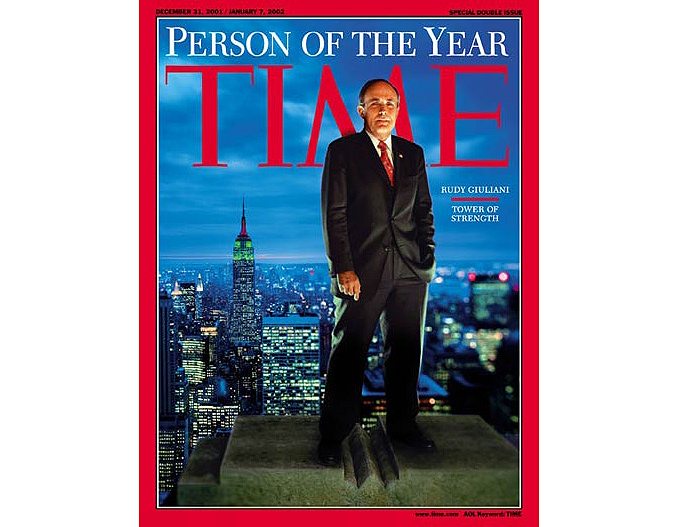

Barack Obama, December 29, 2008, by Shepard Fairey, who created the original “Hope” poster that crystalized the Democrat’s campaign for the presidency. “Going back to the artist who created it made perfect sense,” says Arthur, who commissioned the piece. “Fairey did a great job on the reprise.”
